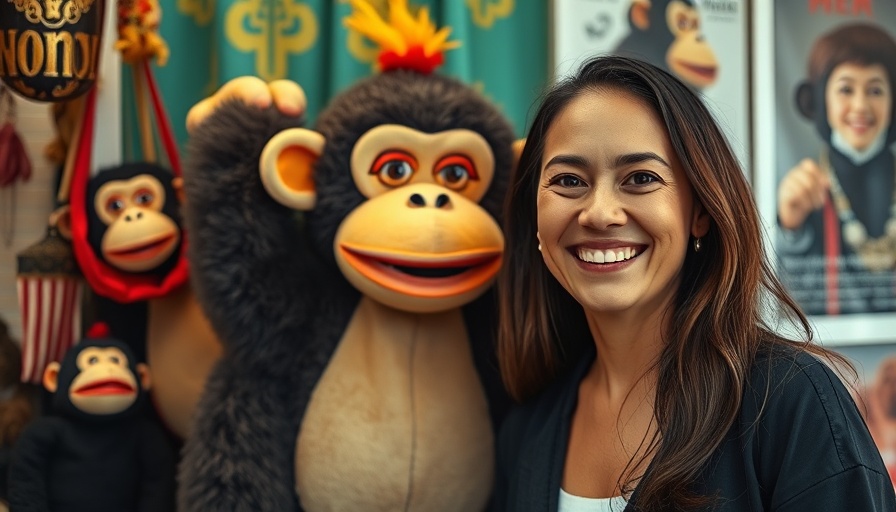
How a Monkey Became a Cultural Icon
Before influencers dominated social media, before stylish monkeys adorned every tween’s backpack, there was Julius the Monkey—a character that transformed the landscape of early 2000s pop culture. Designed by Orange County's own Paul Frank, Julius quickly morphed from an artistic endeavor into a phenomenon that captured the hearts of the youth. His wide-mouthed grin and quirky designs became synonymous with a youthful rebellion and creativity, establishing a cultural touchstone in fashion and entertainment.
From Humble Beginnings to Iconic Status
Paul Frank, a Huntington Beach native, took his childhood inspirations—Disneyland, European magazine aesthetics, and 1950s pop culture—and spun them into pure gold. It was around the late '90s when Frank's creativity found its footing. Working at a local newsstand, he drew inspiration from various artistic movements. Soon, his quirky creations exploded into merchandise: T-shirts, wallets, backpacks—you name it, it likely featured Julius. Retailers such as Urban Outfitters and PacSun were inundated with the character as he became a must-have for the youth culture of the time, signifying a blend of nostalgia and quirky style.
The Evolution of Julius into Multi-Media
By 2001, Julius transcended simple merchandising to become a character in his own right with the animated series “Julius and Friends.” This venture catapulted him into a broader media landscape, capturing the imagination of children and adults, proving that a drawing of a monkey could weave its way into both hearts and homes. In 2011, Julius even made a splash at the Macy’s Thanksgiving Day Parade, symbolizing not just his creator's vision but the broader cultural impacts Frank had ignited.
Influence on Fashion and Consumer Culture
The late '90s to early 2000s was a unique time in fashion, driven by the rise of streetwear and a growing interest in individual expression among the youth. This shift paved the way for characters like Julius to root themselves deeply within clothing culture. Frank's designs, seen as both playful and rebellious, quickly became a way for young people to express their identities. What's fascinating is how the essence of Julius resonates with current trends of self-expression and the influence of social media on how brands reach consumers today.
Bringing Back Retro Nostalgia
Fast forward to today, and nostalgia plays a critical role in consumer behavior. In 2023, Paul Frank collaborated with Loungefly, bringing a fresh take on Julius with stylish mini backpacks and wallets that beckon to sentiments of yesteryear. Reimagining the classic design with a modern twist shows not only the lasting charm of Julius but also the cyclical nature of fashion trends, where what was once old becomes new again. This partnership not only breathes new life into the Julius brand but also connects older fans with a younger audience looking for trendy, yet nostalgic pieces.
Celebrating Iconic Designs and Cultural Impact
Today, as we celebrate iconic designs and their profound cultural impacts, Paul Frank’s contribution through Julius the Monkey remains highly relevant. It reminds us that creativity fused with cultural significance can create a legacy much larger than initially intended. The whimsical designs of Frank encouraged not only style but an acknowledgment of the deeper cultural fabric that binds eras together. As Orange County locals, we should recognize and honor this significant chapter in our creative landscape that has inspired countless others in the world of art, fashion, and design.
Julius the Monkey stands as a testament to the fact that sometimes, a simple idea can spiral into an enduring symbol of expression and identity. As our local communities continue to evolve, let’s embrace the creativity that resides within Orange County and celebrate how it shapes our lives in unexpected ways. Interested in supporting local artists and their unique creations today, stay tuned for upcoming community events that celebrate our local culture!
 Add Row
Add Row  Add
Add 




Write A Comment